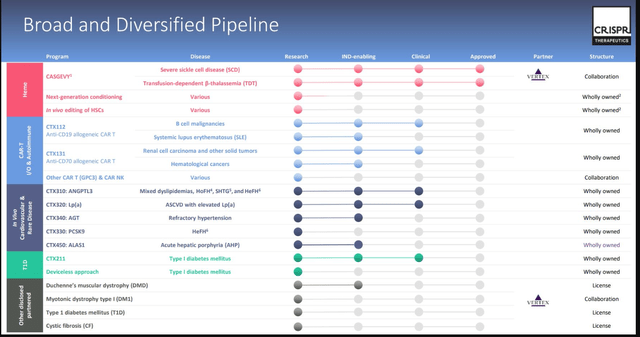MicroStockHub
After raising interest rates an unprecedented 21-fold (from a target range of 0%-0.25% in March 2022, to 5.25%-5.50% since last July) in response to pandemic-induced inflation, the Federal Reserve has left the cost of borrowing in the United States stuck at a 20-year high. But now, with inflation showing signs of being tamed, and as the labor and employment picture is getting softer, the Fed has finally signaled that it is open to cutting rates in September. This, of course, creates a new environment for companies, primarily in terms of their cost of capital, but also in terms of perceptions of future profitability. So which sectors, industries, and companies will potentially benefit quickest and most as rates begin to ease?
There are several ways to answer that question, but I will focus on two.
- The entities that will benefit the most are, first, those that are the most interest rate sensitive because their capital mix is dependent on debt, and/or their customer base often relies on debt to finance the purchase of their products and or services. This group includes such enterprises as REITs and renewable energy project developers, and as a group, they are likely to benefit in both real and market return terms.
- The second group likely to experience meaningful share price returns as rates come down are those perceived to be high growth enterprises, particularly advanced innovators. Especially if they are still in a pre-earnings growth stage.
In other words, the two broad groups that stand to benefit the most in a moderating rate environment are the same groups most heavily punished as rates went up, and then stayed high.
Let’s look at some examples from the holdings of the AXS Green Alpha ETF (NXTE) starting with the first group of beneficiaries, interest rate sensitive firms.
Hudson Pacific Properties (HPP) is one of our high-conviction REITs: it owns very high quality AA space office and studio buildings in desirable markets, it caters to a high-demand niche market of studios for production companies (think movies, TV, video games, podcasts), it garners premium lease rates, and it has maintained high occupancy levels, even as much of the REIT space has seen tenancy decline. And yet, as of July 31, 2024, its share price is down 85% from the high in February 2020.
Why have markets not discriminated between higher and lower quality REITs? There are many reasons, but, in my opinion, it is primarily because most trading today is executed by algorithms programmed to instantaneously respond to broad market signals. Thus, as rates rise, they reflexively dump anything conventional wisdom holds to be interest rate sensitive, including all REITs, regardless of underlying fundamentals. Again, rates have risen more than 20-fold this cycle, and the selling has been commensurate. This has been punishing for the holders of HPP and all REITs, but now, with declining rates a possibility, it presents a unique opportunity. REITs with high quality fundamentals such as HPP stand every chance to be rewarded soonest and most as costs of capital decline and the stock algorithms begin a cycle of reflexive buying. NXTE holds several additional best-in-class REITs and project finance companies poised to exhibit similar dynamics.
The second group of likely beneficiaries are the high growth, innovative problem-solvers that have been Green Alpha’s staples for more than a decade. These can be large, well established, profitable companies like Taiwan Semiconductor Manufacturing Co. (TSM) or smaller, earlier stage innovators such as biotech Crispr Therapeutics (CRSP), which has not yet posted positive earnings.
Again, to the indiscriminate algorithm, “growth” equals “sell” in a rising interest rate environment, no matter how important the company is to the world’s economy-TSM-or how promising and valuable its intellectual property and potential products might be-CRSP. TSM’s shares fell 56% between February 2021 and the end of 2022, although they have since recovered in part due to the hype around all AI-related activities. CRSP has fallen 71% between January 2021 and July 31, 2024. Yet, CRSP potentially represents a generational buying opportunity, being as it is a company co-founded by one of the Nobel laureates who discovered CRISPR-Cas9 gene-editing technology, who is now leveraging her ownership of that intellectual property to develop truly transformative therapeutics that could make the firm a juggernaut. The company has revenues, since they developed a cure for sickle-cell disease that is currently being administered to patients, but CRSP is still pre-profit. In terms of future products, I will let Crispr Therapeutics’ own pipeline slide speak for itself:
So as we approach a potential inflection point in the interest rate cycle, we’re presented with a rare opportunity in which savvy investors can capitalize on markets’ algorithmic oversimplification. The indiscriminate selling of interest rate-sensitive stocks and high-growth innovators has created a landscape ripe with undervalued assets. Companies like the examples summarized above are just a couple examples of the potential that lies in this new economic environment.
It’s worth reiterating that these companies, and others like them in the NXTE ETF, have been sold off not due to deteriorating fundamentals, but largely because of their categorization as “interest rate sensitive” or “growth” stocks. As we’ve seen, this algorithmic approach fails to discriminate between the wheat and the chaff, creating potential value for discerning investors. The key is to identify those with solid underlying value propositions that have been overlooked in the rush to divest during the high-interest rate era.
Investors who recognize this opportunity and act decisively stand to benefit greatly. By focusing on quality REITs and groundbreaking innovators across sectors, they can position themselves at the forefront of the coming market shift. As algorithms begin to favor these stocks once again, early movers will likely see substantial returns.
The potential moderation of interest rates isn’t just an economic indicator – it’s a call to action for discerning investors. By focusing on these opportunities now, before the market fully prices in the implications of moderating rates, investors may position themselves for substantial returns in the coming cycle. As always, thorough due diligence and a long-term perspective remain crucial in navigating these market shifts.
Disclosures
Green Alpha Advisors, LLC is an investment advisor registered with the U.S. SEC Registration as an investment advisor does not imply any certain level of skill or training. Green Alpha is a registered trademark of Green Alpha Advisors, LLC. Green Alpha Investments is a registered trade name of Green Alpha Advisors, LLC. Green Alpha also owns the trademarks to “Next Economy,” “Investing in the Next Economy,” and “Investing for the Next Economy.” Please see additional important disclosures here: Legal Disclosures & SEC Filings – Green Alpha Investments
At the time these articles were written and published, some Green Alpha client portfolios held long positions in Hudson Pacific Properties (HPP), Taiwan Semiconductor Manufacturing Co. (TSM), and/or CRISPR Therapeutics (CRSP). This does not represent all of the securities purchased, sold or recommended for advisory clients. You may request a list of all recommendations made by Green Alpha in the past year by emailing a request to any of us. It should not be assumed that the recommendations made in the past or future were or will be profitable or will equal the performance of the securities cited as examples in this article. Not all Green Alpha separate accounts or our sub-advised mutual fund held the stocks mentioned. To inquire whether a specific Green Alpha portfolio(s) holds stock in any particular company, please call or email us.
The AXS Green Alpha ETF (NXTE) is distributed by ALPS Distributors, Inc., which is not affiliated with AXS Investments or Green Alpha Investments. There are risks involved with investing, including possible loss of principal. Past performance does not guarantee future results. Diversification does not ensure profits or prevent losses. Investors should carefully consider the investment objectives, risks, charges, and expenses of the fund before investing. Please see the Fund’s website for important documents, such as the prospectus, and contact information to learn more about the AXS Green Alpha ETF. A prospectus should be read carefully before investing.
Editor’s Note: The summary bullets for this article were chosen by Seeking Alpha editors.


